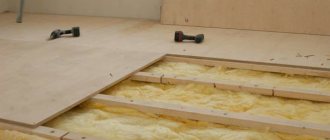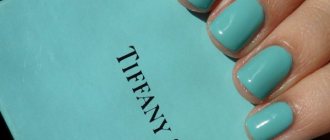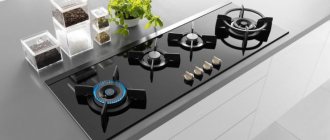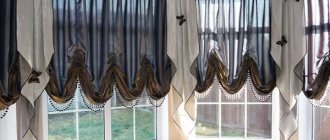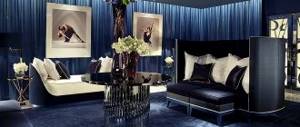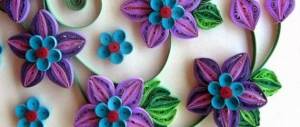Types of fiberboard
Waste wood material is split, pressed into boards and dried to produce several types of fiberboard. They are:
- soft and porous;
- semi-solid;
- superhard;
- ennobled.
Soft and porous fiberboards with low strength provide sound and heat insulation. Semi-solid fiberboard (with a higher density and hardness) is used to cover the back walls of cabinets, tables, walls, shelves and other furniture parts. The bottom for retractable drawers is cut out of them. Hard slabs are used to cover the floor; doors, arches, partitions, and various containers are made from them, since they are easy to process and simple to install.
The surface of treated fiberboard is carefully processed, dye is applied and cached, and special decorative properties are imparted to the surface of the sheet by applying a pattern - imitating wood, etc. A separate group of boards includes fiberboard with a laminated surface. Synthetic resins of a special composition are applied to the sheet to increase the moisture resistance and strength of the material.
Types of material
At the moment, most of the products in construction markets and in specialized stores are produced using the “wet” method: water is poured into the ground chips, which is squeezed out after adding adhesive resins and casting the desired shape by pressing.
Fiberboard production is possible only on professional equipment
According to the standards prescribed in GOST 4598-86, slabs are usually divided into two groups: low and high density. But for greater convenience, there are several more intermediate options. Existing varieties:
- Soft. Used for rough work and leveling surfaces that are not subject to constant mechanical stress. They act as heat and sound insulation, making them suitable for covering music studios.
- Semi-solid. They have proven themselves excellent as back walls of cabinets and chests of drawers. Can also be used for packaging.
- Solid. Like soft ones, they have clear parameters prescribed in GOST. Their density is 850 kg/m3. This is a common furniture material; drawer bottoms and inserts in frame fronts are made from it. Suitable for wall cladding, although it can also be laid on horizontal bases.
- Increased hardness. They are actively used for filing external door panels and are mounted on the floor in high-traffic areas.
For each type of work, its own material density is selected.
There is also a decorative category, which is most often found among the last two types. It has a refined surface, so it can be used for interior cladding or furniture. This variety includes the following options:
- Laminated. A paper layer painted in the desired color is applied to the smooth side. It is extremely rare because it has low resistance to any influences.
Inexpensive laminated boards look impressive, but have poor performance characteristics
- Painted. It is used primarily for the production of “economy” or middle class interior items. Gives just the right color to back walls or open areas in living rooms and slides.
- Laminated. It has a higher quality coating that allows you to replicate the texture and shades of different tree species.
- Veneered. An exclusive option, manufactured mainly to order for decorative work of varying complexity.
- Perforated. It has numerous holes with complex geometry and is used for lining heating radiators, erecting partitions or portable screens. It is divided into painted and laminated fiberboard. The “economy” option comes without processing.
Wood fiber panels are available in different finishes
It is this material that is most often used for the manufacture of inexpensive kitchen aprons: the panel is cut into the desired format and photo printing is applied to it.
On a note! There are also decorative tiles made of fiberboard, which have a well-defined relief. It is used as an imitation of more expensive types of facing materials.
Brands of solid slabs and thickness parameters
The front surface of solid slabs is processed and, depending on this, divided into grades:
- T – front surface is not processed;
- T-P – the front layer is tinted;
- T-S – the front layer is a finely dispersed (wood) mass;
- T-SP – finely dispersed mass of the front layer is tinted;
- ST – sheet density – super-hard, surface – untreated;
- ST-S is a sheet of super-hard type with a finely dispersed mass in the front layer.
Fiberboard is produced with different physical and mechanical characteristics, therefore the brands: T, T-S, T-P and T-SP are combined into quality groups - A and B and grades - I and II.
Panels of hard and superhard types are available in 2.5, 3.2, 4.5 and 6 mm thickness. These fibreboards are used to cover walls and floors under conditions of increased hygroscopicity.
Why do you need to know the dimensions of fiberboard?
Depends on the size:
- Required quantity of products. When performing finishing processes, extreme precision is required at all stages. Knowing the basic parameters of the panels allows you to choose the best arrangement order and minimize leftovers, which will reduce costs and time spent.
- Selecting the optimal area of use. Depending on the dimensions, the products are suitable for certain jobs. So, for the floor you will need products of greater thickness and density, and for the ceiling you can use a material with low resistance to constant mechanical loads. This helps to obtain a better quality result, as well as eliminate defects and deformations.
- Proper storage and transportation. The panels must be placed in a horizontal position on a leveling substrate, so long-term storage requires a certain room, and suitable transport for transportation. If the conditions are not met, the geometry of the products may be disrupted, which is especially undesirable for large thicknesses.
Wood-fiber materials should be stored horizontally on dry racks.
Taking into account the parameters of fiberboard, it is possible to reduce financial costs and perform work reliably and with the highest quality.
Brands of soft slabs and their thickness
- Soft slabs with different densities are classified by the following units: M-1, M-2 and M-3.
- The soft thin fiberboard sheet has a thickness of 2.5-40 mm.
- Semi-solid low-density fiberboard sheet has a density of 6, 8 and 12 mm;
- Semi-hard sheet with medium density has a thickness of 16 and 25 mm.
Thin soft sheets have both advantages and disadvantages. Semi-solid sheets of low and medium density are more suitable as insulating materials, but not for covering rooms.
With the correct selection of fiberboard, taking into account the types and sizes, you can facilitate the facing and construction work and save money.
The relationship between slab thickness and scope of application
The dimensions of fiber sheets affect the area of their use:
- If it is necessary to carry out cladding with additional thermal insulation, a soft slab with a thickness of 8–12 mm is used. This option is also suitable for laying on a rigid horizontal base.
- It is possible to veneer interior partitions, level walls or hem door panels if the thickness of hard fiberboard is 6 mm.
Fiberboard has a fairly wide range of applications
- Products up to 12 mm can be used as a substrate. They fit perfectly on screed or old wooden floors prepared for subsequent laying of decorative materials.
- Sheets with a thickness of more than 18 mm are used as stiffeners for various partitions (not support ones). Decorative elements are suitable for creating a variety of furniture parts.
The products are not waterproof, so for rooms with high humidity levels it is better to choose options that have undergone special treatment.
Dimensions of different types of fiberboard sheets
| Dimensions | Soft fiberboard | Fiberboard of semi-hard, hard and extra-hard types |
| Length, mm | 1220, 1600, 1800, 2500,2700, 3000 | 2140, 2440, 2745, 3050,3350, 3660 |
| Width, mm | 1200, 1700 | 1220, 1525, 1830, 2140 |
Plates with a thickness of 3.2 mm come in the following sizes:
- 2745x1700
- 2745x1220
- 2440x1220
- 2140x1220
Manually transporting such slabs is almost impossible, so when purchasing, order a cargo taxi. For industrial needs, fiberboard with dimensions of 6100x2140 mm is produced.
Price per hardboard sheet
Hardboard prices per sheet vary by brand and cut size. For comparison, we can give standard slabs, which are 2750 × 1220 mm with a thickness of 3.2 mm.
- brand “T” costs 169 rubles;
- the same with double-sided lamination - 320 rubles.
Super hard fiberboard in stock
Depending on the size, the cost of sheets is determined based on the price per 1 m². That is, this is a fundamental characteristic of pricing. In our example, the price of 1 m² will be:
- 2.75 × 1.22 = 3.355 m²;
- 169 / 3.355 = 50 rubles costs 1 m².
If you purchase sheets measuring 2140x1220, then the cost of one sheet will be: 2.14 × 1.22 = 2.61 m² - this is its area. Now: 2.61 × 50 = 130 rubles. Stores must indicate the price per square meter of hardboard.
laminated hardboard
Watch this video on YouTube
Fiberboard laminated
The basis of laminated fiberboard is ground and pressed wood chips mixed with binders and antiseptic components. A melamine film is attached to the front side. No glue is used. A strong connection is ensured by thermosetting polymer impregnation. It is produced using special resins with a low level of hardening.
Laminated fiberboard resembles natural wood after applying a press to an uncured film. Textured embossing imitates protrusions of wood fibers. The coating is made decorative so that the slab performs aesthetic functions. Resins do not allow water to penetrate inside the sheet, which prevents its swelling. Therefore, HDF can be beautiful and at the same time moisture resistant.
In addition to lamination, fiberboard is given an attractive appearance by caching. In this case, a ready-made roll film made of resins and paper is laid on the sheet and secured with an adhesive composition with or without heating to a high temperature.
All types, brands and sizes of fiberboard, including laminated fiberboard, can be ordered on the website https://tsi-plit.ru/ and agreed upon delivery.
Standard fiberboard sheets
Such material as fiberboard (it stands for “fibreboard”) is known to all people who are in one way or another involved in repair or construction work.
And it’s not surprising, because fiberboard, also called hardboard, is a very convenient material for leveling walls, ceilings, and floors. But that's not all. In furniture production, it often acts as an analogue of furniture. I think everyone has seen cabinets, tables, beds and other furniture made from fiberboard in furniture stores, and many probably actively use it.
Among the undoubted advantages of this material are its low cost, as well as ease of installation, including due to its light weight. It is also worth noting that standard fiberboard sheets are quite large in size with a small thickness, which means they can be bent as you need.
Today, there are two main methods for producing fiberboard. When produced by the wet method, standard sheets are obtained, in which only one side is smooth. But when produced using the dry method, you can make either a sheet with one smooth side or a double-sided one. This technology is considered more modern. With this type of production, special substances are added to fiberboard that make it more moisture resistant.
Standard fiberboard sheet sizes
It must be said that the market offers fiberboard sheets not only made using different technologies, but also of different sizes. Standard sheet sizes can be as follows: thickness - from 5 to 12 millimeters, width - from 1 to 1.83 meters, length - from 1.2 to 6.5 meters. As you can see, the “range” between sizes is quite large. This allows you to select slabs suitable for specific needs and room sizes, which, you see, greatly simplifies the work. The sizes of fiberboard sheets according to GOST can be viewed in the table.
As you can see, in the table, fiberboard sheets are further divided into several different types based on density.
Price of fiberboard standard sheet
The price also varies depending on the density parameter. It is soft slabs that have the lowest cost, although, of course, this parameter also depends on the size of the sheet.
Types of fiberboard by density
- Soft fiberboard sheets are successfully used as an analogue of cardboard. They have a density of 100-300 kilograms per cubic meter. They are used primarily as thermal insulation, as well as for leveling surfaces . Soft sheets are made from coniferous wood and are highly environmentally friendly because they do not contain synthetic resin additives. The thickness of soft sheets can range from 8 to 16 millimeters. Their length may vary, but their width is clearly defined: there are only two types of slabs with a width of 1.2 or 1.7 meters.
- The second type of fiberboard in terms of density is called semi-solid. Its density ranges from 400 to 800 kilograms per cubic meter. This material is used primarily in furniture production (but not as the main material, but for the back walls of cabinets, for example). Sometimes this fiberboard is also used to level floors. Its thickness is 6-12 millimeters, the sizes can be very different, as you can see in the table.
- The third type of fiberboard is the most universal. It is called hard and superhard. The density of such fiberboard will be from 850 to 1100 kilograms per cubic meter, although the thickness of the sheet is minimal and is no more than six millimeters. These fiberboard sheets are used both in furniture production for the manufacture of furniture and for leveling surfaces in the room being renovated. In addition, they can be used for the manufacture of interior doors and for wall cladding.
It is worth noting that all these types of fiberboard can be sold with additional processing in the form of painting or laminating film. This gives them certain advantages, in particular, it improves their resistance to moisture and other harmful influences.
The price of fiberboard will depend on what type you choose, what the thickness and size of the sheet will be, and whether it will be additionally covered with decorative or protective coatings. Based on these parameters, the cost of 1 meter of material can vary from 40 to 300 rubles per square meter. As you can see, the “run” is very large. In addition, if you need fiberboard for a small area where there is too much of a whole sheet, you should ask at construction and repair stores; they often sell fiberboard trim at a reduced price.

